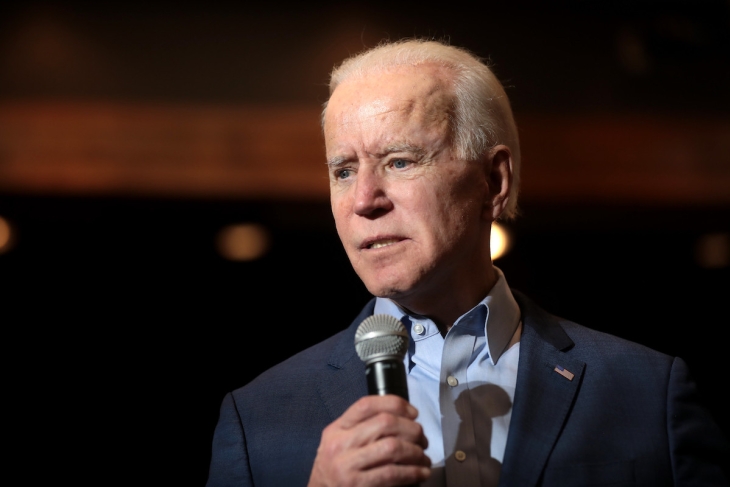Last week, the Biden administration released new guidance for how schools should handle discipline for students with disabilities. While much of it simply restates federal requirements and distills conventional wisdom on “best practices,” this initiative could have a negative effect on classroom order and school safety if school leaders take the Biden administration’s core message too seriously—or if the administration enforces its flawed assumptions too vigorously.
A Washington Post headline characterized the guidance thusly: “Biden warns schools not to overpunish students with disabilities.” The Biden admin argues that students with disabilities are “overpunished” in two ways—with disproportionate frequency and greater severity for similar offenses. But neither claim withstands scrutiny.
It is certainly true that, as a group, students with disabilities are punished more frequently. As one of the guidance letters notes, students with disabilities represent “13.2 percent of total student enrollment but received 20.5 percent of one or more in-school suspensions and 24.5 percent of one or more out-of-school suspensions.” But the important question isn’t the aggregate disparity, but whether it actually represents systemic discrimination. In 2019, Penn State’s Paul Morgan and colleagues published a meta-analysis to try to assess this question. When they examined studies that controlled for a variety of student characteristics—including student behavior—they found that five of seven findings “failed to indicate that [students with disabilities] were more likely to be suspended.” Ultimately, the researchers concluded that “Empirical evidence regarding whether U.S. schools discriminate when disciplining [students with disabilities] is currently inconclusive.”
If, as that evidence suggests, the aggregate disparities are not necessarily evidence of discrimination, then pressuring school leaders to close them could lead schools to engage in reverse-discrimination, treating students with disabilities more leniently than general education students.
Indeed, a 2019 national survey of teachers conducted by the Fordham Institute suggests that this is already common practice. When teachers were asked what would happen “if a student with special needs and a general education student commit the same infraction,” 66 percent of teachers said that the consequence would be more severe for the general education student. Only 4 percent said the consequence would be more severe for the special education student. Almost 70 percent of general education teachers, and more than 60 percent of special education teachers, agreed that students with disabilities were “treated too leniently, even when their behavior had nothing to do with their disability.”
Schools are now suffering from a rising tide of behavioral problems in the wake of the pandemic, and teachers are expressing that they don’t feel adequately supported by their administrators. According to a recent poll by the American Federation of Teachers, 88 percent of teachers cited “poor student discipline and a lack of support for dealing with disruptive students” as a very or fairly serious problem. To the extent that school leaders take the Biden administration’s message seriously, it could lead them to be even less supportive of teachers.
How seriously school leaders will take this guidance will depend on how vigorously the Biden administration’s Office for Civil Rights enforces it behind the scenes. The guidance articulates a disparate impact standard for civil rights investigations. That is, school districts could face investigation based on aggregate disparities in discipline between general and special education students.
This announcement alone may lead school districts to prioritize their aggregate statistics over properly handling individual students and maintaining orderly classrooms. This is especially problematic because students can be categorized with an “emotional disturbance” disability for consistently behaving badly. Given that federal law requires school officials to determine whether misbehavior is rooted in a students’ disability, and that such distinctions are especially arbitrary and subjective for emotionally disturbed students, schools may feel pressure to make the most poorly behaved students the hardest to discipline in order to avoid a federal civil rights investigation.
And when the investigations come, the big question will be: What policy changes will the Biden administration push? The key example given in one letter is quite modest, suggesting that a school might have to make an accommodation to a no-swearing policy for a student with Tourette Syndrome. But another letter contains a broader exhortation for schools to implement “responsive practices in place of exclusionary discipline.” When Biden’s Assistant Secretary in the Office for Civil Rights, Catherine Lhamon, served in that role under President Obama, her office leveraged disparate impact investigations based on race to push sweeping changes to school discipline practices—pressuring schools to limit “exclusionary discipline” regardless of the effect on classroom order and school safety.
If school administrators use this guidance simply as a refresher document, and the Biden administration keeps its civil rights investigations modest and targeted, then this initiative could ultimately prove constructive. But if school administrators take the Biden administration’s central argument too seriously, or if the Biden administration overreaches in its investigations, it may do more harm than good. State superintendents should keep a close eye on all such investigations, and school leaders should steeply discount the allegation that they are “overpunishing” students with disabilities.


